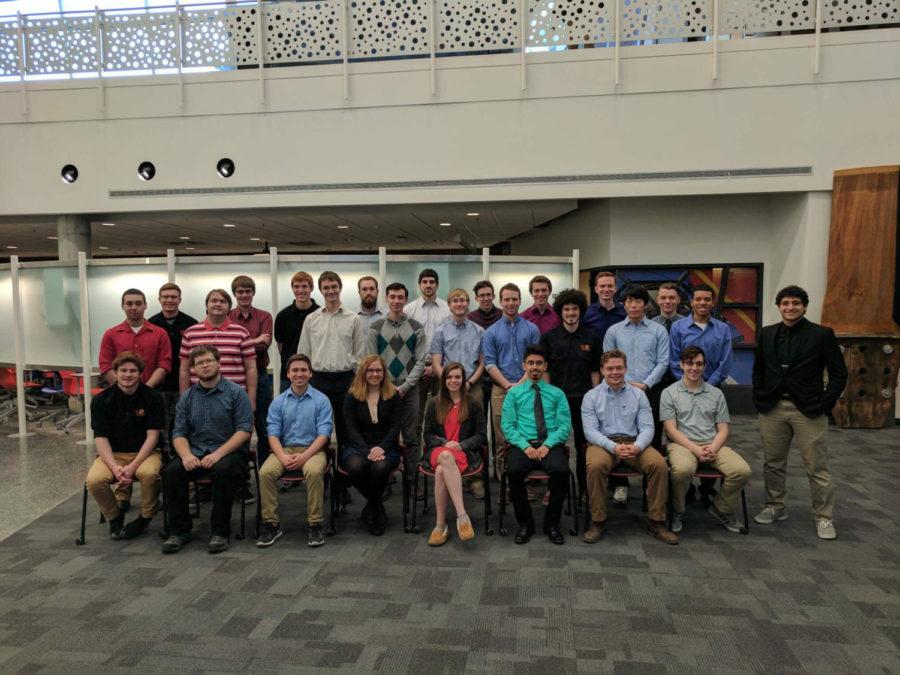Team CySat selected for NASA’s CubeSat Launch Initiative
CySat has been chosen by NASA to build a nanosatellite that will help map out asteroids through their CubeSat Launch Initiative.
March 22, 2017
A group of students from the Make to Innovate program (M:2:I) has recently been chosen by NASA to participate in the CubeSat Launch Initiative (CSLI), which aims to enable universities and other institutions to learn more about space technology, exploration and education.
The team, known as CySat, will be building a nanosatellite that will map out asteroids and other near-Earth objects.
Through the Educational Launch of Nanosatellites, or ELaNa, the NASA CSLI program aspires to encourage public-private technology partnerships, further low-cost development and reinforce that nation’s future space workforce, according to a NASA website overview.
These missions are flown aboard ride-share launches through either government payloads or from Venture Class Launch Service (VCLS) contracts.
Various firms from around the world have provided launch vehicles for ELaNa and CubeSat missions, including the United States Air Force, Virgin Galactic and Rocket Lab USA.
Rami Shoukih, junior in aerospace engineering and team leader for the project, said that while the mission itself is important, the main goal of the CySat M:2:I group is to get students interested in space and the industry it encompasses.
“We want to usher in the ability for students to get hands-on experience on space-based applications so that they can apply classroom knowledge to real-life projects,” Shoukih said.
The CySat initiative hopes to one day provide the opportunity for other institutions and small businesses to request the production of a satellite, and CySat would then build one on its behalf.
“CySat hopes to one day be a service provider for other educational institutions or small businesses who don’t really have the ability to create their own satellites,” Shoukih said. “They can basically ask us to create a satellite for them using our CubeSat, and they would just have to provide us with the payload they want.”
The satellites are rather small, measuring only 10-by-10-by-11 centimeters and weighing about 3 pounds.
CySat’s mission is to gather data that would allow it to take physical samples of asteroids that fly near Earth. Its goal is to learn more about those asteroids and relay that information to NASA.
The team is currently producing a CubeSat that would mimic those actions but hopes to build a satellite that would fulfill those duties on a real asteroid in the near future.
“Our first mission is to get us through the door,” Shoukih said. “We took an interest in asteroid prospecting, and our first concept satellite is just proof that this is possible, but a future mission would require us to create a satellite that actually does what it needs to do, and that is to send it to an asteroid and gather data that we could then send to NASA for further inspection.”
The team is currently using special radar technology that will allow it to take pictures of the asteroid and then interpret what the object is made of and how large it is.
“The CySat team is working on a remote-sensing type of platform right now,” Matthew Nelson, M:2:I program coordinator, said. “And they’re using synthetic aperture radar on this particular platform. The long-term goal is to use SAR to map out NEOs (Near Earth Objects).”
This type of endeavor brings many challenges, but they may not always be expected.
Shoukih explained that as the team leader for the project, the biggest challenge for him has been to help keep the team members motivated on the project.
He understands that balancing schoolwork and a big project like this can be difficult, but it can provide the members an opportunity to market the project to future employers.
“I’m very proud of what the students have done so far, especially getting accepted into this [CSLI],” Nelson said. “I’m very happy and excited to see the students get this opportunity. … I can’t say enough about how hard the students have worked on this project.”







